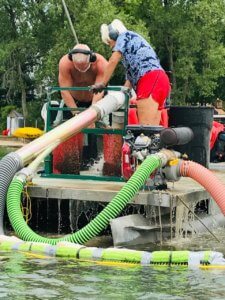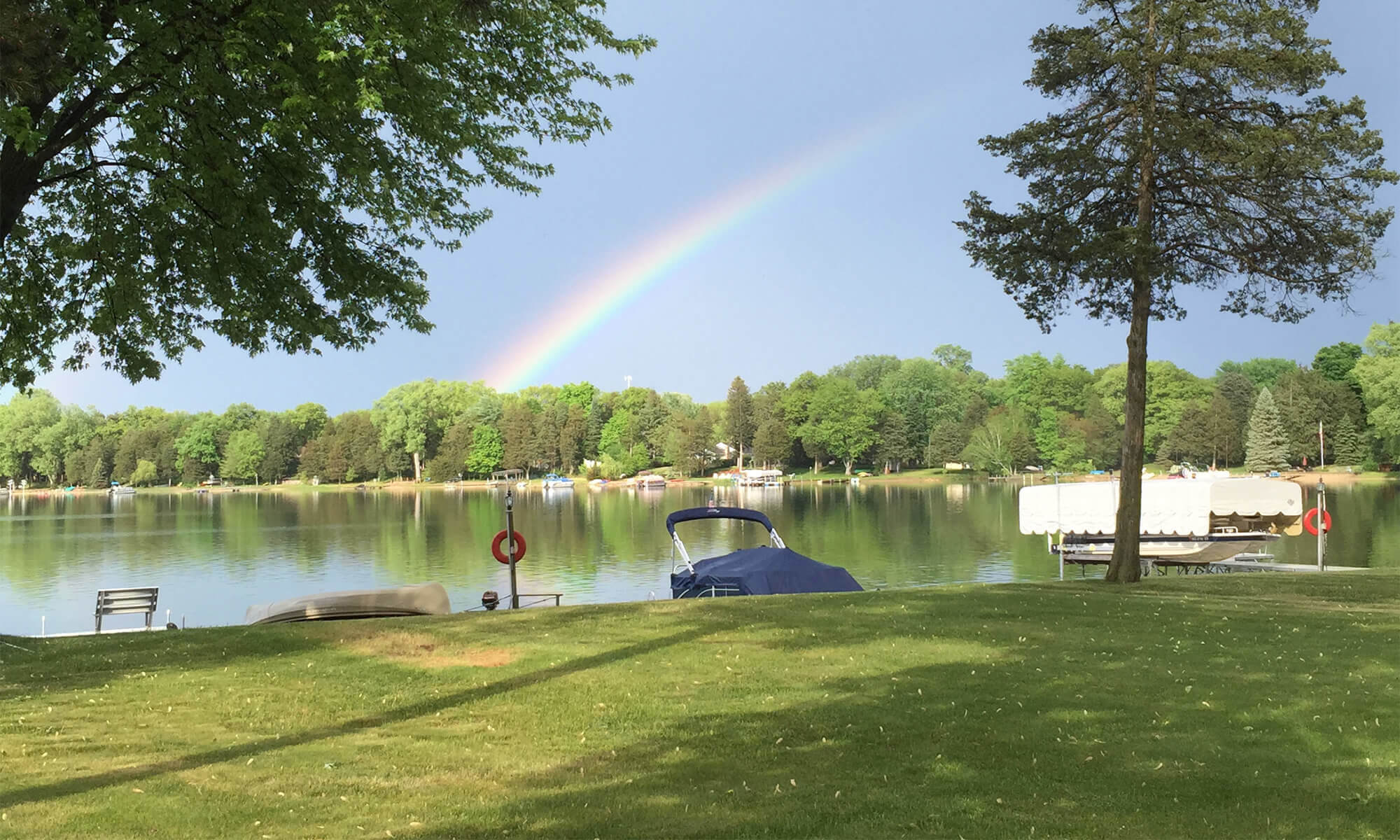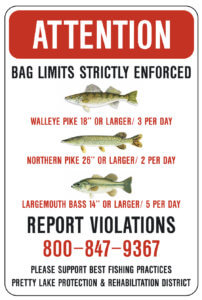2023 Pretty Lake Water Testing Report
SPONGY MOTH (formerly Gypsy Moth) WARNING
As discussed at the PLPRD's annual meeting on 8/5/2023, the outbreak of Spongy Moths is an urgent topic which should be at the forefront of District homeowner's minds. A sizeable infestation has been reported here at Pretty Lake.
Invasive spongy moth caterpillars, formerly known as gypsy moth, strip trees of their leaves, potentially killing high-value trees. They prefer to feed on oak, birch, crabapple, aspen and willow leaves but will also feed on many other tree and shrub species, including pines.
Southern Wisconsin and parts of the north are already in a high-population outbreak that is predicted to continue and spread. Below are materials to educate and aid property owners into taking action. Questions may be directed to Randy Cavaiani at 847- 774-5956
- Spongy Moth Fact Sheet_WI DNR (2 pages)
- Spongy Moth Fact Sheet_UW Garden Facts (2 pages)
- Spongy Moth Management Guide for Homeowners_UW (10 pages)
DASH (Diver Assisted Suction Harvesting) of Aquatic Invasive Species


Since 2019, Pretty Lake has been running its own DASH (Diver Assisted Suction Harvester) to remove tons of invasive Eurasian Water Milfoil each summer. If left unabated, the invasive weed can eventually take over and adversely affect fishing and motorized boat navigation. Several tons of milfoil have been removed each summer season. And it's making a difference. Pretty Lake water is extremely clear, clean and healthy. We further encourage lake residents to clean their own shorelines to avoid re-seeding of milfoil fragments. If you have any questions about how to identify and/or remove milfoil "by its roots", please contact Mark Bretl, who you'll find in the Pretty Lake resident directory.
And we are truly happy to cooperate and share data with the DNR, other Lake Districts, Lake Associations, municipalities, and conservation organizations by our continued involvement in the Clean Boats, Clean Waters (CBCW) campaign.
Thank you to the many interns and volunteers who have been conducting watercraft inspections over the years!
Wisconsin DNR Articles
DNR-Graphic -Pretty Lake Citizens' Lake Monitoring Network
Wisconsin' Healthy Lakes and Rivers Plan
=======================================

Pretty Lake's Fish Stocking Initiative
Since 2012, and in cooperation with DNR guidelines, Pretty Lake has stocked thousands of walleye fingerlings between 6 & 9 inches, in addition to a large amount of Northern Pike fingerlings. We've created a fund in our financial statement that is specifically for fish stocking. All money received for fish stocking will never go into the general treasury. Pretty Lake Fish Stocking will continue to work with the DNR, the PLPRD Board and lake residents interested in fish stocking. Each year it's decided by the DNR which kind of fish, if any, should be stocked here in order to provide the most diverse population of good-sized fish of various types.
If you would like to contribute in any way to the fish stocking initiative at Pretty Lake, please contact Maureen Cavaiaini.
To Donate: Please make checks payable to: "PLPRD Fish Stocking"
This is a TAX DEDUCTABLE donation and you will receive a receipt.
Mail To:
Pretty Lake Protection & Rehabilitation District
Attn: Treasurer
W377S5166 W. Pretty Lake Rd
Dousman, WI 53118

A Little Bit About BLUE-GREEN Algae
Staying Safe and Healthy In Wisconsin Lakes
updated 05-04-2024

